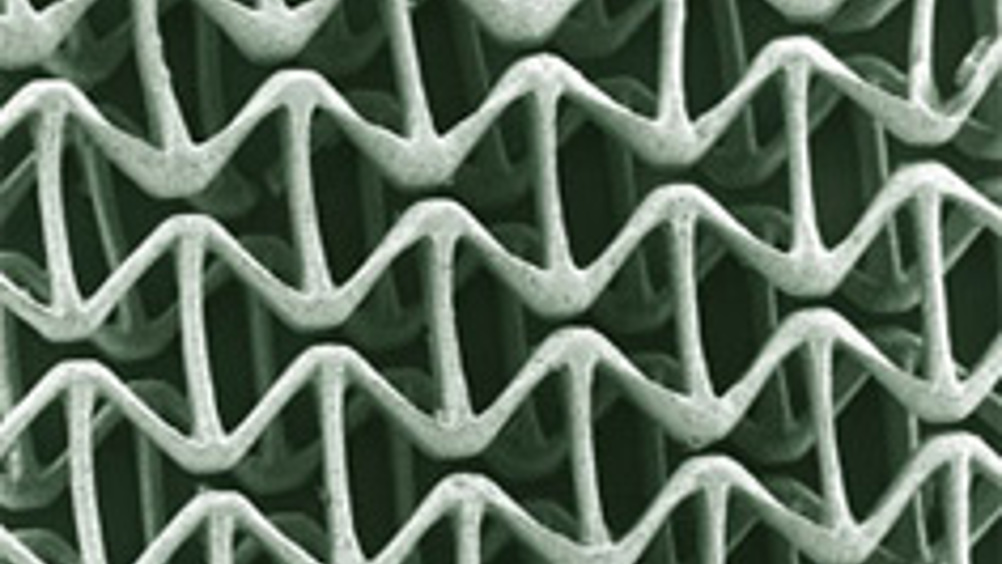Biomaterial used for repair mimics native human tissue
A new biomaterial designed for repairing damaged human tissue developed at the University of California, San Diego, more closely mimics the properties of native human tissue.

The new biomaterial was created using a new biofabrication technique that Shaochen Chen, a professor in the Department of NanoEngineering at UC San Diego’s Jacobs School of Engineering, is developing under a four-year, $1.5m (£919,000) grant from the US National Institutes of Health.
It uses precisely controlled mirrors and a computer projection system to shine light on a solution of cells and polymers to build three-dimensional scaffolds with well-defined patterns of any shape.
Shape turned out to be essential to the new material’s mechanical property. While most engineered tissue is layered in scaffolds that take the shape of circular or square holes, Chen’s team created two new shapes called ’re-entrant honeycomb’ and ’cut missing rib’.
Both shapes exhibit the property of negative Poisson’s ratio (not becoming thinner in cross section when stretched) and maintain this property whether the tissue patch has one or multiple layers. One layer is double the thickness of a human hair and the number of layers used in a tissue patch depends on the thickness of the native tissue that doctors are trying to repair.
Register now to continue reading
Thanks for visiting The Engineer. You’ve now reached your monthly limit of news stories. Register for free to unlock unlimited access to all of our news coverage, as well as premium content including opinion, in-depth features and special reports.
Benefits of registering
-
In-depth insights and coverage of key emerging trends
-
Unrestricted access to special reports throughout the year
-
Daily technology news delivered straight to your inbox










Water Sector Talent Exodus Could Cripple The Sector
Maybe if things are essential for the running of a country and we want to pay a fair price we should be running these utilities on a not for profit...